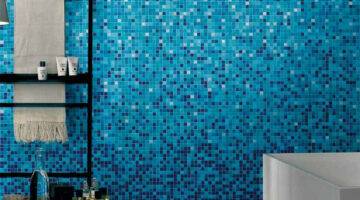What to Consider When Using Natural Stone Tiling
Natural stone tiles are flooring materials that are created from mountain born materials such as Slate, Marble, Limestone, “Travertine”, Granite and Sandstone. They each have different characteristics and styles that are used for different each individual projects. When shopping and choosing what natural stone tiles you wish to use it is important
The first factor to consider is the absorption rate. The absorption rate is how porous a material is. The more absorbent a material is the more likely it is to stain, as well as how much cracking damage it suffers during freezing conditions. There are four different levels of absorption when it comes to natural tiles. Non-vitreous is the highest absorption and should not be used in any environment that can become damp. Semi-vitreous are less absorbent but will require more maintenance the more liquid is exposed to them. Vitreous is the standard level of absorption and is considered most appropriate to be placed in areas with low to mid indoor or outdoor traffic. Impervious is the most resistant when it comes to the absorptions of liquids and are the easiest to maintain and clean. Out of all the natural stone materials, Sandstone is the most absorbent; Travertine, Limestone, and Slate all have a medium absorbency, while Granite is pretty much waterproof. It is also known that any polished materials will also absorb less water.
The next factor to consider it the quality of the materials, which is measured in grade. Grade can refer to the size, shape and thickness of the tiles along with the condition of its surface. The most common grading systems use three levels of quality. Grade 1 is the highest quality. Everything is uniform and there are virtually no flaws. Grade 2 refers to any materials that have minor defects such as chips, scratches or an irregular surface. Grade 3 materials have noticeable major flaws in size, shape, surface or chipping which makes them only appropriate as accent pieces or used in rustic decorative pieces.
The next thing to think about is the coefficient of friction. The CoF is the measurement of how slippery the materials are. The higher the CoF, the more traction a tile has. The number is especially important in high traffic areas, and places that encounter moisture such as the bathroom and the kitchen.
As with everything there are noticeable benefits and drawbacks to using natural stone flooring. Most of the common benefits of using natural stone tiles is mostly in the way of aesthetics. For example since the tiles are made of natural stone, using them can help give a space a more natural feel. Also, since each piece of stone is created from earth, they all have a different earth like pattern which when utilized correctly can create an aesthetically pleasing artwork.
The main drawbacks involve damage that can occur when the tiles are not properly cared for. Certain natural stone as stated is quite porous, so to stop that you would need to treat the stone with a sealing agent periodically to protect the surface. Different polished materials such as marble can scratch easily. Other materials are brittle and likewise can chip fairly easily as well.
When it comes to shopping for natural stone flooring materials you need to do your research so you can understand the different characteristics of the materials you want to buy. Along with your research you should also find out the appropriate ways to utilize your tiles and how to maintain them so you can continue to have nice natural flooring.



